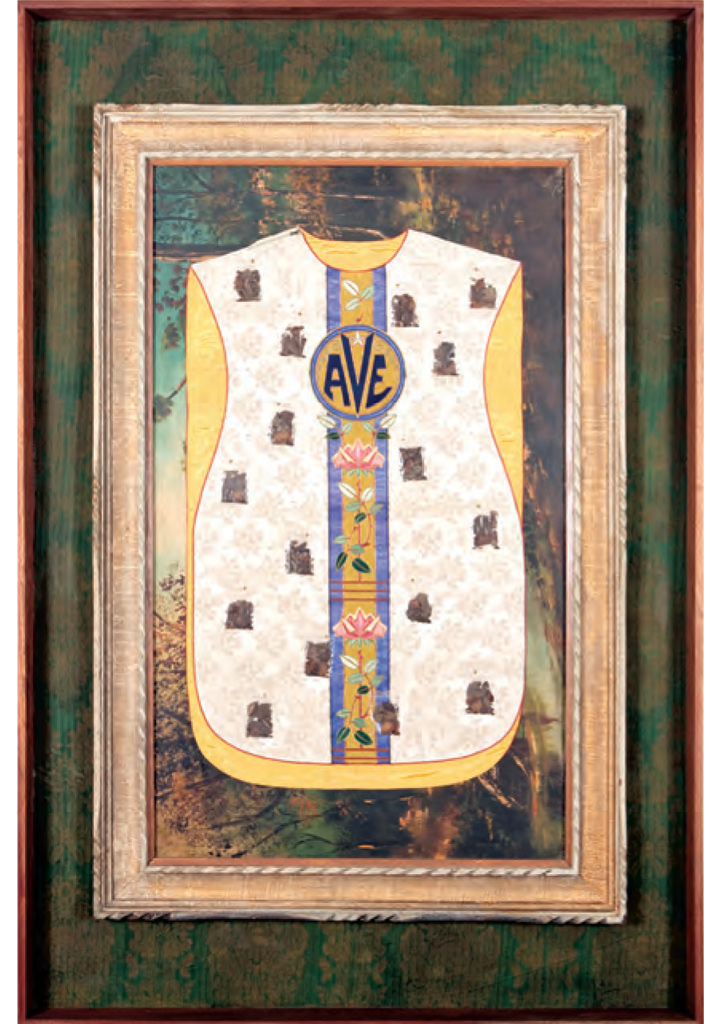
Sacred is the new profane: The Art of Norberto Roldan
Norberto Roldan’s exhibition at Art Stage Singapore, represented by Singaporean gallery, Taksu, harnessed the power of memory, remembering, and wit in the social constructs of Southeast Asian culture and history. With irony, innovation, and sophistication, his works probe the shifting ground of old societies facing new realities. Entitled The Beauty of History is that it does not Reside in one Place, it was on view at the Marina Bay Sands from January 13 to 16.
Frame by frame, piece per piece, one is able to extract information based on the objects and materials of each work. Like an unraveling of a mysterious culture from a descendant-long- gone (Filipino), each work tells a story, evoking a feeling of nostalgia and a sense of death in the room.
“I tend to begin each project/exhibition now with a lot of must-do- readings and came across photos of Adolf Hitler’s apartment in Berlin that reflects the Führer’s baroque and unexpectedly sentimental taste. One could imagine that a Gianni Versace or a Tom Ford could have occupied this apartment, so immaculately beautiful and peaceful as it was. As the images of Hitler’s apartment would attest, they can convey a different reality and can set a time frame particular to a person’s fancy,” Roldan shares.


So, this really is a case-in-point for anthropology, which tries to extract information based on material culture. True enough, elements of Roldan’s work seem like anthropological studies of a theatrical set: dried rose petals pinned on a ceremonial cloak, small altars concocted out of cheap table cloth, plastic toys, medicine bottles, grooming mirrors, an old transistor radio, glass perfume vessels, apothecary bottles, jewelry boxes, and old photographs.
Southeast Asia’s history is characterized by an interaction of regional history with foreign powers while each country started to develop independently after European colonization in the 19th century. This layering of the indigenous with the extraneous created the wholly individual cultures of the Philippines, Malaysia, Singapore, Indonesia, etc. Roldan’s works are nonetheless relevant to the psyche of a region resisting and embracing traditions relevant to ones’ existential and cultural awareness.
According to Roldan, his works develop the idea that “sacred is the new profane” (also the title of a previous exhibit) and that his works “emphasize objects dematerialized into simple patterns in grids as kitschy décor and as profane as they could get.” The signs of death, offering, and remembering are testaments to a transforming region with a history of amalgamation of extreme cultures colliding and disintegrating.
This article first appeared in BluPrint Volume 1 2011. Edits were made for BluPrint online.
READ MORE: Return to Lemuria: Strengthening a people’s sense of identity through folk art


